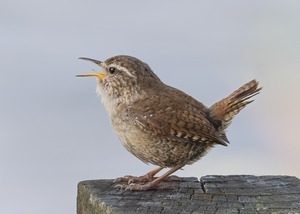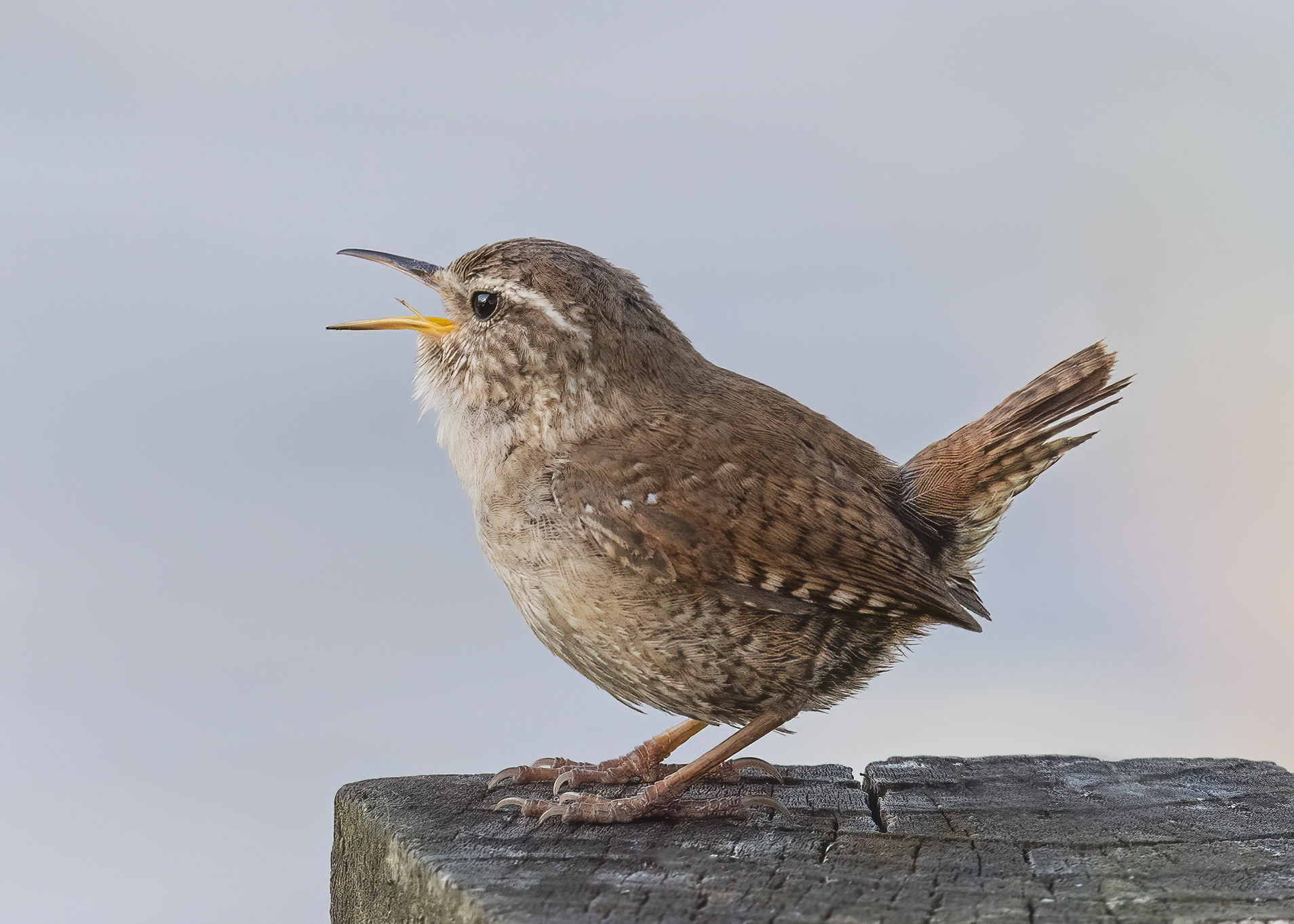 LINKED PAPER
LINKED PAPER
Good practice guidelines for long-term ecoacoustic monitoring in the UK. Metcalf, O., Ashington, B., Baker, E., Bradfer-Lawrence, T., Browning, E., Carruthers-Jones, J., Darby, J., Dick, J., Eldridge, E., Elliott, D.R., Heath, B., Johnston, A., Lees, A.C., Meyer, C., Ruiz Arana, U., Smyth, S., Abrahams, C. 2023 Report by Manchester Metropolitan University VIEW
The UK government recently pledged to protect 30% of the most important areas for biodiversity – it is likely we will see an increase and diversification of these projects in the coming years. It also aims to respond to the threat of biodiversity loss with a range of measures aimed at conserving and increasing biodiversity on productive land through the Biodiversity Net Gain strategy, an increased focus on agri-environment schemes, and a rapid increase in rewilding projects across the country. Should these plans come to widespread fruition, they are likely to require effective biodiversity monitoring over large areas and long periods to establish baselines and monitor change. Whilst ecosystem monitoring is in increased (and long-term) demand, the timescales and scope of the surveying required do not always readily lend themselves to traditional ‘boots on the ground’ survey methods.
Fortunately, a range of new technology-driven approaches are being developed in wildlife monitoring, including the use of drones, camera traps, eDNA, and the focus of this blog – autonomous sound recording units. In recent years the availability, affordability and variety of off-the-shelf autonomous recorders has greatly increased, driving a global uptake in passive acoustic monitoring. Whilst many ecologists will be familiar with the principles of passive acoustic monitoring from bat or cetacean surveys, it is a method increasingly being used to monitor terrestrial wildlife at human-audible frequencies and lends itself particularly well to monitoring bird populations.

Figure 1 Some autonomous recording units, such as this Audiomoth, are small and relatively cheap making them readily deployable in a range of locations with custom-made covers © Oliver Metcalf.
Passive acoustic monitoring (PAM) has already been used for a range of exciting ornithological research in the UK. These include monitoring the bird species present at the Wild Ingleborough rewilding project, relating vocal activity to the number of male Capercaillie (Tetrao urogallus) present at leks (Abrahams 2010), monitoring breeding success of Eurasian Curlew (Numenius arquata) in the uplands, occupancy modelling of a range of rare heathland species (Abrahams and Geary 2020), surveying European Nightjars (Caprimulgus europaeus) (Zwart et al. 2014), assessing the impact of artificial light on nocturnal migrants (Gillings and Scott 2021), and prediction of species richness based on acoustic properties of the soundscape (Eldridge et al. 2018). Globally, there have also been a large number of studies that have great applicability to UK ornithology, including the estimation of seabird colony size from vocal activity (Borker et al. 2014, Oppel et al. 2014), accurate prediction of the bird community composition based with deep-learning models trained on soundscapes (Sethi et al. 2022), and optimisation of sampling for manual listening to optimise the number of species detected (Metcalf et al. 2021).

Figure 2 After the sun sets wetlands can come alive with bird sound – passive acoustic monitoring has already been used to monitor species such as Eurasian Bittern (Botaurus stellaris), Spotted Crakes (Porzana porzana) and Corncrake (Crex crex) © Oliver Metcalf.
PAM has several advantages over more traditional survey methods. The biggest benefit being the capacity to function for long periods without frequent human intervention, allowing studies to be conducted over broad spatiotemporal scales necessary for long term biodiversity monitoring in the UK. This allows surveys to be conducted in places where regular access is logistically challenging, minimises human impact on the study site, eases surveying at times that are unfavourable for traditional surveys, and enables the collection of large quantities of data. Furthermore, pre-programmed recording schedules allow for a variety of sampling regimes, reducing power consumption and further extending the duration over which autonomous sound recording units (ARUs) can record without human intervention – in a flexible, predictable, and replicable manner. This reduces the cost of data collection in comparison to traditional survey techniques, and facilitates targeting of nocturnal, rare, or hard to detect species that may only vocalise at specific times. ARUs offer the capacity to record continuously and at broad frequency spectra, meaning that PAM can be used to simultaneously monitor all soniferous species in an area, increasing the cost-effectiveness of multi-taxa surveys and facilitating surveys of understudied taxonomic groups such as insects.

Figure 3 As a highly vocal species undergoing climate-related range shift, Willow Warbler (Phylloscopus trochilus) is a good candidate for studying with passive acoustic monitoring © Oliver Metcalf.
However, the use of PAM in ecological surveying remains at an early stage. Hardware is rapidly developing, and there are a myriad of new methods to analyse the huge amounts of acoustic data that results from automated monitoring. This means that starting a new acoustic monitoring project can be a daunting task for those new to the field, and that obtaining a degree of standardisation between studies to ensure comparability and repeatability is challenging. In order to help overcome these two challenges, a symposium was held at Manchester Metropolitan University in the summer of 2022. From the discussions held there, it was clear that a guidance document would be welcomed by many in the field, and a team of researchers drew up the “Good practice guidelines for long-term ecoacoustic monitoring in the UK”.
These guidelines cover everything needed to get started using PAM of terrestrial biodiversity at human-audible frequencies. It contains detailed chapters with discussion and recommendations on hardware selection, study protocol and design, initial data exploration and the two main analytical paradigms of ecoacoustics; targeted monitoring – including how to use deep-learning classifiers such as BirdNet, and soundscape analysis with acoustic indices. It also has an executive summary that clearly sets out the minimum standards the authors think are vital to maintain a degree of standardisation in the field without restricting innovative research, and an evidence based quick-start guide in Appendix 1. Whilst the guidance is undoubtedly UK focused, much of the content will be applicable elsewhere in the world.
We hope that PAM can play a central part in monitoring long-term nature recovery in the UK, and that this guidance will give ecologists, conservationists and researchers the information they need to make the most of a rapidly developing and exciting tool.
References
Abrahams, C. 2019. Comparison between lek counts and bioacoustic recording for monitoring Western Capercaillie (Tetrao urogallus L.). Journal of Ornithology 19: 685-697. VIEW
Abrahams, C., & Geary, M. 2020. Combining bioacoustics and occupancy modelling for improved monitoring of rare breeding bird populations. Ecological Indicators 112: 106131. VIEW
Borker, A.L., McKown, M.W., Ackerman, J.T., Eagles- Smith, C.A., Tershy, B.R. & Croll, D.A. 2014. Vocal activity as a low cost and scalable index of seabird colony size. Conservation Biology 28: 1100-1108. VIEW
Eldridge, A., Guyot, P., Moscoso, P., Johnston, A., Eyre-Walker, Y., & Peck, M. 2018. Sounding out ecoacoustic metrics: avian species richness is predicted by acoustic indices in temperate but not tropical habitats. Ecological Indicators 95: 939-952. VIEW
Gillings, S., & Scott, C. 2021. Nocturnal flight calling behaviour of thrushes in relation to artificial light at night. Ibis 163: 1379-1393. VIEW
Metcalf, O. C., Barlow, J., Marsden, S., Gomes de Moura, N., Berenguer, E., Ferreira, J., & Lees, A. C. 2022. Optimizing tropical forest bird surveys using passive acoustic monitoring and high temporal resolution sampling. Remote Sensing in Ecology and Conservation 8: 45-56. VIEW
Oppel, S. et al. 2014. Estimating population size of a nocturnal burrow-nesting seabird using acoustic monitoring and habitat mapping. Nature Conservation 7: 1-13. VIEW
Sethi, S. S., Ewers, R. M., Jones, N. S., Sleutel, J., Shabrani, A., Zulkifli, N., & Picinali, L. 2022. Soundscapes predict species occurrence in tropical forests. Oikos 2022: e08525. VIEW
Zwart, M.C., Baker, A., McGowan, P.J. & Whittingham, M.J. 2014. The use of automated bioacoustic recorders to replace human wildlife surveys: an example using nightjars. PLoS One 9: e102770. VIEW
Image credit
Top right: ‘Little Jenny Wren’ – Troglodytes troglodytes © Caroline Legg CC BY 2.0 Flickr.
If you want to write about your research in #theBOUblog, then please see here.





